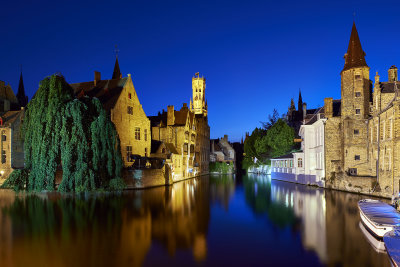Believe it or not, we're saying exactly the same thing.
What we are both saying is that on a same-image-size basis, the D800 will outperform an equivalent DX camera of the same pixel density because of the downsampling/pseudo-binning/aggregation/whatever you want to call it... .But only if you compare images of the same size.
A 100% print of the FX camera will have the same quality as a 100% print of a DX camera (assuming same photosites size/quality). It will of course be BIGGER, which is "better", but not "better quality.
This is what the article is saying.
You must have read a very different article then the one I read ...
Parts like
"
full frame is actually no better than it’s crop sensor counterpart (Nikon D7000 vs D800) in terms of light gathering capability."
"
The Nikon D7000 and D800 have the same low light performance!"
and then he ventures into confused ramblings about things image size and its effect on SNR which is plain stupid since there is no image size at the time of the exposure, just a sensor size, and it is the sensor size which does indeed matter, not what arbitrary image size is defined after the fact.
Large parts of the article is silly, much of its reasoning lacks logic, and the conclusions are easily disproven by simple real life tests (like actually using a D7000 and a D800 side by side).
The point that I made was that while this is technically correct, from a practical perspective, bigger is better, because it allows you to downsample, even if you're not printing large.
The is not much technically correct about his ramblings. The actually technical correct reasoning (the one he calls a myth) goes well along with the practical perspective of bigger is better, because bigger really is better at gathering light.
What we all seem to be disagree on is what "gathers more light" actually means.
That gathering more light, as in more photons, really means gathering more light. There is absolutely no ambiguity there.
I am saying that it does "gather more total light", just because it's bigger. I beleive that you are saying the same thing.
What I do not agree with would be "it gathers more light per photosite" or "gathers more light per square inch" - THIS is what would increase the "quality" of the capture.
Who is claiming a D800 is gathering more light per photosite? (Maybe the confused writer of the article did, that would match his lack of logic ...)
The "quality" of the print does end up being better, just because it's being downsampled, up until we pass 100% for DX, then the "quality" of the print is still better, becasue the DX needs to be upsampled.
Each "pixel" captured isn't better, it's just the PRACTICAL application that ends up being better.
As so many you seem a little stuck with performance of single pixels, what always matter is the aggregated performance of the total amount of pixels used.
In the case of the D7000 vs D800 it is pretty simple, since they have very similar pixels, its just that the 2.25 times larger surface area of the D800 sensor allows it to have 2.25 times more of those equally performing photosites/pixels. Which means the D800 gathers 2.25 times more light and by and large have a 2.25 times (slightly over a stop) higher performance then a D7000. Something the article you seem to agree with, vehemently denies.
The other place people are getting confused is because FX is usually better than DX at the SAME RESOLUTION, because the photosites are bigger/better.
Size of photosites is largely irrelevant to this discussion. More on that below.
This si what has fueled the "FX is better than DX" thinking, but that really isn't as true as it once was, because it's often the case that an FX and DX camera now has the same photosites. The problem is, people are still thinking that this is the reason FX is better, but that is much less true than it once was.
And now you are arguing against what you yourself wrote in the beginning of you post

In any case, I really do think we're saying the same thing, we're just getting caught up in semantics.
No. What I say is the following:
Sensor performance (in terms of light gathering, DR, SNR etc) is almost exclusivly determined by two factors:
- The sensor technology used (overall, with a few exceptions, newer beats older technology)
- The sensor area used to create the image.
The D7000 vs D800 is a good case, since they use very similar (by practical purposes identical) sensor technology, but have different size sensors.
Another interesting example is the D800 vs D600/D610 (or Sony A7r vs A7) where both the technology and the surface area is the same - but the photosites/pixels have different size. And interestingly, the performance in terms of light gathering, DR, SNR etc is for practical purposes identical, which supports the notion that the size of photosites/pixels is more or less inconsequential.


